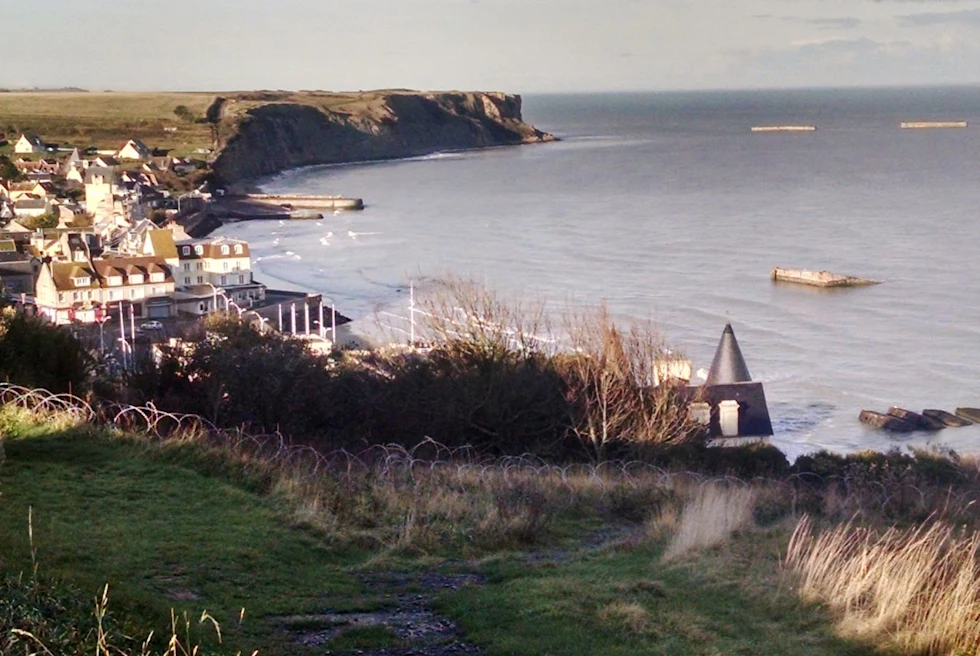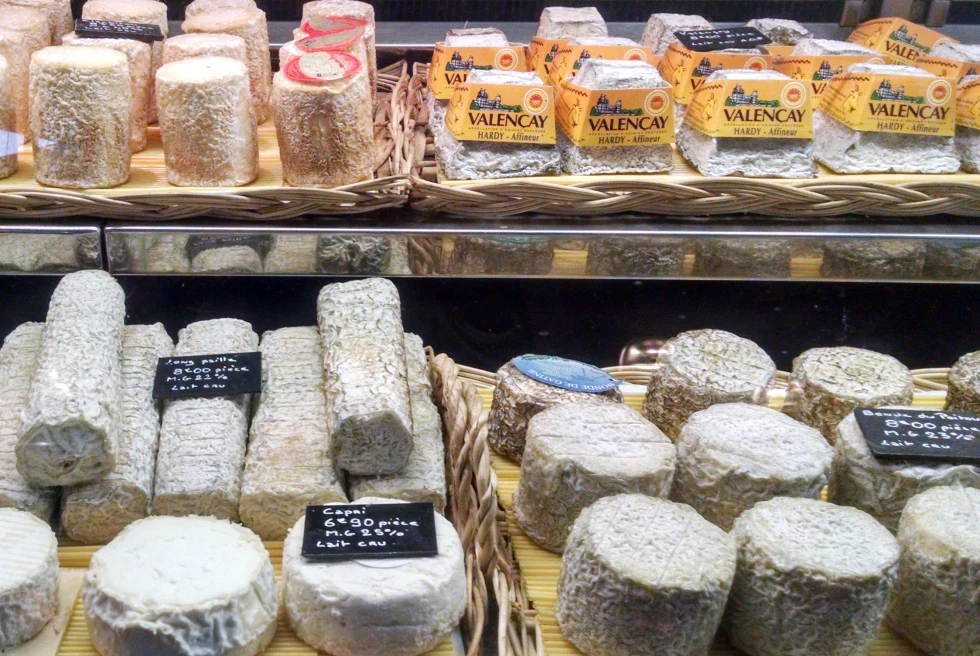
Curator’s statement
Normandy is a place that can hold the interest of adults and teens alike. Because of its poignant WW2 history, it has educational value outside of the typical museum environment. Yet with its cheeses and pastries, abbeys and churches, cobblestoned streets and ciders, it can also be a fun and a memorable introduction to Europe for tweens and teens. The coast is rugged, the towns quaint and the areas in between show the real workings of France, the agriculture and wildlife, civilians and tradespeople (cidermakers, potters, lacemakers, metal forgers and bakers). Consider going during the off season; while Wintertime in Europe can be a bit rainy and colder, it also means fewer tourists (and November/December have the added bonus of beautiful Christmas decorations).
The Fora Difference
Book with Jody to access exclusive perks and experiences on your trip.
Killer perks
Free upgrades, spa credits and more—we got you
Personalized recs
Customized travel planning for your style
Insider knowledge
Expert advice from people who’ve actually been there
Where to stay across Normandy, France
Unlock perks by contacting Jody to book your trip.
Things to do across Normandy, France

Things to do in Rouen
This city oozes history, known most famously for being the site of Jean D’Arc’s execution. The Notre Dame cathedral is an imposing figure, the façade of which attracted Monet’s brush.
The town center is a pedestrian-only shopping area, good for a stroll along its cobblestoned streets and timbered buildings, and in the middle is the Gros Horloge, a remarkable 14th century clock and belfry. The tower offers sweeping views of the town, including the cathedral. Its small museum highlights its history and shows the inner workings of the machinery which, remind your kids, works without electricity. This clock was built to have only one hand, but marks the weeks and is a beautiful piece of art worth a visit.
Il Pleut des Cordes, a luthier’s shop where you can watch the masters make their instruments. Riveting.
Last, but not least, visit the square of Jean D’Arc’s last moments where she was burned at the stake. Here you will find a monument, a church, a pretty little square and garden and a fabulous market several days of the week. Stroll with your kids through the market for an eyeful of Normandy cheeses — worth a try are the heart-shaped Neufchatel, Livarot, pont-l’eveque, camembert, crillat-savarin and don’t forget the butter! You may also see prepared foods in this market: octopus marinating in olive juice and lemons and small seafood quiches. Ambrosial. Grab a picnic while you are at it!
Things to do in Honfleur
Honfleur is one of the most popular places to visit in all of France. Its proximity to the water, its beautiful, old, shop-lined port full of sailboats, the oldest wooden church in France, streets and buildings that have lured and inspired many an impressionist painter, including Monet, add to the character of this place. It is also the birthplace of Erik Satie, composer and musician extraordinaire. This is a charming town for a bit of “flânerie”.
Église Notre Dame: This is the tiniest of chapels, beautifully situated on a hill overlooking the town, and one of the most charming I have ever seen. It is decorated with ships and maritime trinkets, and its walls are covered with plaques of appreciation from those who claim it has healed them. It was the subject of one of Monet’s paintings. Outside is a beautiful carillon of bells, which if you are lucky, you may hear while you are there. Nearby, there is spot with an overlook of Honfleur and the port, which is worth a stop. While there is a bus that stops at the church on occasion, if you hike up the hill, you may have the place to yourself.
Eglise Ste Catherine: Has the distinction of being the oldest, wooden church in France. Built in the 15th century, its original nave looks like an upside down boat (which, perhaps makes sense as it was built by marine carpenters). It is a dark and creaky place, with enormous vaulted ceilings and lovely windows that direct welcome sunbeams down upon the worshippers.
Satie’s House is worth a visit, especially if you have kids. This museum takes advantage of technology with an audio tour that treats you to Satie’s music while you visit, and the exhibits are triggered by your proximity. There are multimedia stations, hands-on areas, a small merry-go-round which you are invited to move by pedaling, while surprises pop up around you. The house is quirky, and the museum celebrates Satie’s eccentricity; it is an absolute delight.
Things to do in Bayeux
Bayeux is in a convenient location to be a home-base for a day trip to Arromanches, Omaha Beach and Coleville sur Mer, home of the American Cemetery. It was founded in the 1st century, and is also where lace is made for some of the couture houses. Some of the streets around the cathedral are cobbled with unusually, red and orange stones, which one might not notice in the summer, but in the rainy winter, they shine with brilliance under feet.
The exterior of the magnificent Gothic cathedral has not weathered particularly well, but it is nonetheless worth a visit. The architecture blends Romanesque with Gothic. The crypt dates back to the 9th century and is quite remarkable, with murals and original pillars still intact.
Bayeux also happens to be the proud owner of the 11th century Bayeux Tapestry many of us studied in high school French or history class. It is quite a sight: 230-foot-long piece of detailed embroidery depicting the Norman conquest of England. It has been, quite astonishingly, well-preserved, and the audio guide gives good explanations and moves along at a good clip. The museum also holds some interesting pieces of regional history.
Things to do in Caen
While Caen has a lot to offer and is a fun city to explore, we stopped here for only one reason: the WWII museum (the Center for History and Peace). This is quite a large museum, and the flow is a bit haphazard, but the content is curated very well- both for the adult and the tween/teen, putting the war into historical, political and social perspective, explaining the forces leading up to the war. As one might expect, it presents events from a European perspective, showing the destruction throughout France and Europe, but they do a good job of giving global coverage of the war and the roles of all nations involved.
The museum is divided into pre- and post- 1945. Not only does the permanent exhibit highlight a detailed timeline to walk along, but it also paints a global picture after the war, the evolution of the Cold War, something I was happy for my children to learn about. There is so much to see: pieces of the Berlin wall, movies and letters from children in 1944, a car used to escape Berlin. Do not miss the memorial wall behind the building and the bunker down below.
Jumieges is a perfect stop to break up a trip between Rouen and the DDay beaches. It is a tiny town, but houses a historical abbey built in the 600’s (yes, you read that right) which survived the Vikings and multiple required rebuilds until the Revolution when it ceased being a working monastery. The romance of the place, being able to wander through this immense now-open-air structure, and its historical backdrop, make it a worthy place for a stop. Spend 30 minutes on a tad of education and then have a lovely lunch on the water at the Auberge du Bac.
DDAY Beaches
A note for your day at the beach sites: There is not many untouristy food stops, so take a picnic, or plan to stop at a bakery for a snack. Wear comfortable clothing and shoes, as there is a good amount of walking.
Arromanches is a visually sweet little town, and emotionally impactful. This temporary landing site built for the Invasion is an extraordinary feat of engineering. If you park by the 360 Cinema on top of the hill (check the dates and times before you go), you will be treated to an overlook point showing all of Mulberry Harbour, where you can see the enormous “caissons” (cement blocks ) used to dock the ships. The beach itself is quite idyllic — here you can get up close and personal with the monstrous cement blocks which still reside there. On your walk down the hill on r. de Batterie, you will pass by the Berry au Bac, one of the tanks used in the invasion, and be treated to the site of this beautiful, little town which flies French and British flags side by side. The Museum du Débarquement is beautifully done — small, but it packs a punch, focusing on much of the engineering and strategy behind the landing. The film is exceptionally moving.
Longues sur Mer battery: We happened upon this gun site on our drive and decided to stop; we were glad we did as it is well-preserved and resonated with our kids. In 1944 the Germans built this vantage point to defend the coast they had taken. There are four guns with a 12 mile range (show your kids how far out to sea that is from where you are standing, it will impress). Scattered in between are machine gun nests, bunkers you can all crawl into.
Pointe du Hoc: I doubt my kids will ever forget walking down into the craters left at this site from the battles of WW2. There are batteries to explore, bunkers to crawl in and a nice memorial to the 225 rangers who fought for two days, eventually scaling these cliffs on June 6, 1944. Their effort and sacrifice is considered crucial to the success of the invasion by the Allies and to the liberation of France as a whole.
St. Laurent-sur-Mer: Omaha beach does not need much introduction, as one of the most well-known and deadly beaches of the Allied invasion of Normandy in 1944. Not only is it worth a personal moment of thanks to walk on the sands on which 2000 young soldiers died, but also to experience the vast expanse and solitude of the place. It is sobering to think of the guns in the hills above now scattered with beautiful beach homes, that would have been pointed down at those arriving on the beach. There is a memorial sculpture of “sails”, Les Braves on the beach.
{There is also a DDay museum here, but there were so many tourists we decided to forgo it.}
Coleville sur Mer: American cemetery — Check the times for the museum before you go, as it is a great place to start before you walk through the cemetery. If you time your visit right, you may be treated to a Taps rendition which will melt your heart. The Stars and Stripes raised at the top of the hill watches over approximately 10,000 American soldiers who gave their lives in Normandy. This plot of land is one of the most stunningly beautiful spots you will see in the area, overlooking the sacred shores, with vast ocean views and endless rolling hills covered with crosses. The scale of the sacrifice is majestic and moving.
Day Trips
When planning my family’s trip, I wanted to have one or two towns to use as home base while we visited the historic DDay beaches. I settled on Honfleur and Bayeux, based on their proximity to the beaches we wanted to see, their own historic relevance, and their size. We wanted a place big enough to explore on foot in our downtime, and which had some elements of interest and education for the kids. We also had a time limit (and, likely, a patience limit, we realized), so we wanted to keep the driving and hotel-hopping to a minimum.
Note on Hotels
ROUEN: Hôtel de la Cathédrale is steps from the cathedral, in a small little alleyway. There is a fat cat to welcome you and a superbly friendly staff. It is chock full of charm — split staircases, crooked stairs, meandering hallways out of a children’s book, a beautiful garden area, and a warm breakfast room with wooden beams and chintzy art. The hot chocolate hit the spot for our rainy weather, and somehow, mid-winter, they found fresh figs the size of my palm to serve us. The hotel will give you parking instructions before your arrival.
HONFLEUR: Maison del Lea — While there is an option to stay at a Relais & Chateaux up the hill, I cannot recommend more whole-heartedly the option of La Grande Maison at Maison de Lea, a whole house (sleeps 12) a block from the hotel, smack in the middle of town. It was the highlight of our stay, and something the kids will remember for years to come. A relaxing little “library” area with one wall of wall-paper books, a full kitchen and dining room with a regal, wooden table and floor to ceiling drapes, monogrammed linens, a keyboard, a bedroom for each of us and a small attic area the kids adored. It is only steps from the main square and port, and a block from the hotel where we had the most elegant of breakfasts every morning. The stone, vine-covered hotel is located just across from Ste. Catherine, has a beautiful restaurant, bar and lounge area, spa and garden.
BAYEUX: Hotel d’Argouge — I am so pleased with this choice of hotel. It is in a quiet section of town, only about 10 minutes from the cathedral, and offset from the street with free parking. It is an 18th century mansion, with a gorgeous, split marble staircase to welcome you, regal sitting and dining rooms for cheese and aperitifs, replete with chandeliers, period mirrors, beautiful woodwork and velvet settees. There is a lovely little garden in the back for sitting in warm weather. Best of all was an enormous room for the four of us which made a lovely place for recuperating after a long day. The suites are beautiful, too. The bathrooms are modern and roomy, and the staff were wonderful. Breakfast in the white table-clothed dining room was a treat.

A note from Jody
A note for traveling with kids in Europe: Jet lag can be a bear — we found that our kids handled it just fine, while we, on the other hand, needed to acclimate with a nap here and there. Make sure to bring activities for the kids in the event of downtime in the room. We also found our appetites were akilter, so there were days in the beginning when we opted to graze (“manger à la pousse”), often with hedonistic and entirely un-nutritious snacks, such as meringue the size of our kids’ faces, instead of sitting down to a meal. (It’s okay, it’s vacation.)
Places to eat & drink across Normandy, France

Places to eat in Honfleur
Just outside of Ste. Catherine is an organic farmers’ market several days a week. Pick up some local cheeses and Calvados, or maybe sample one type of each of the apples available at the market, some fresh cider for your kids and a loaf of fresh bread. There are several cute chocolate, pastry and ice cream shops in the streets surrounding the port. Our favorites were: Chocolats Kouignettes and nextdoor Maison Georges Larnicol, with bins piled high of candies and regional delights only seen here: huge meringues, chocolate in the shapes of things you might never imagine.
Places to eat in Bayeux
We learned early on in our trip that on an occasionally long morning of trapsing or driving or doing something the kids might not be bouncing on their toes to do, the promise of an afternoon pastry stop would get them moving again. In Bayeux, indulge yourselves at the nineteenth-century La Reine Mathilde tea room. They will do a full tea service, but you might also just pop in to salivate at their display and take a load off while you marvel at the opulent, mirrored interior and stacks of macarons.
Crepes are always an easy fail-safe with kids. Two to try:
Crêperie l’Insolite: Don’t miss their big round “boules” for dessert, filled with chocolate ganache, nuts and meringue.
Crêpes et Cie: A more traditional looking place near the cathedral, with cream-colored stone walls, green chairs, spiral staircase and a cozy feel. Open low season. Crepes were good, desserts even better.
Places to eat in Jumièges
Auberge du Bac is a casual place, right on the river, with a beautiful patio for summer lunch, and a closed-in area for winter. The food was good by any standard, but surprisingly good for such a small town. My boys tried their first duck here and the chocolate molten cake for dessert was a hit. To boot, we got to watch the ferry bring cars across the river, back and forth, while we ate — great entertainment at any age!
Need to know
Itinerary suggestion:
Paris to Rouen — (a straight, 2 hour drive) overnight.
Rouen to Honfleur (via Jumièges) overnight.
Honfleur to Bayeux (via Caen) (1 hr to Caen, 30 more to Bayeux) overnight.
From Bayeux we toured Omaha Beach, Arromanches, Coleville Sur Mer.
Then Bayeux back to Paris (we left our car in Bayeux and trained back to Paris, 3.5 hrs).

Travel Advisor
Jody Holman

Get in touch with Jody
Did you like this guide? Reach out to customize and book your own experience. Or, just to chat about travel in general.
You can expect a response from Jody within 1–2 business days. You’ll also be subscribed to our traveler newsletter (you can unsubscribe at any time).
If you are looking for more family-friendly tips for traveling in France, take a look at my guide to Paris: The Ultimate Family-Friendly Trip to Paris, France.